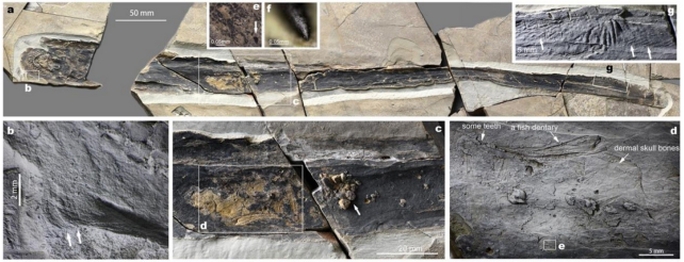Fossils of two lampreys that lived at the same time as dinosaurs were found by Chinese scientists in an excellent state of preservation. One of the two specimens is 64.2 cm long, the largest lamprey fossil ever found.
This fish that looks like an alien monster is also called a “vampire” in the present. They suck the blood of other aquatic animals, slaughtering natural fish in the ocean to destroying aquaculture areas.

Two ancient lampreys were recreated from fossils – Photo: Heming Zhang
According to Live Science, lampreys are one of two groups of jawless vertebrates that first appeared in the fossil record 360 million years ago during the Devonian period. 31 species are still alive today, continuing to haunt.
Two new fossils were determined to be about 160 million years old, which means they date back to the Jurassic period, the era when dinosaurs began to explode.

Fossils unearthed in China – Photo: NATURE COMMUNICATION
The research team including Dr. Feixiang Wu from the Chinese Academy of Sciences, Dr. Chi Zhang from the Chinese Academy of Sciences and Dr. Philippe Janvier from the French National Museum of History said these fossils are an important link. between more ancient specimens and modern lampreys.
This is of great significance because this horrifyingly primitive-looking animal is of great importance in the study of how vertebrates arose and evolved.
The two newly discovered species have been named Yanliaomyzon occisor and Yanliaomyzon ingensdentes, including the first part of the name marking the famous Chinese fossil site Yanliao Biota, where they were discovered; the latter in Latin means “Assassin” and “Big Teeth”.
The fossils also represent the stage when lampreys officially evolved into “vampires” like modern times.

The more ancient fossils of this terrifying species are mostly too small and weak, leading paleontologists to believe that they were only algae eaters and not strong enough to attack other species in the region. sea of monsters” ancient times.
In contrast to previous efforts, this research just published in the journal Nature Communications also points out that the Southern Hemisphere is the true “territory” of this species.





